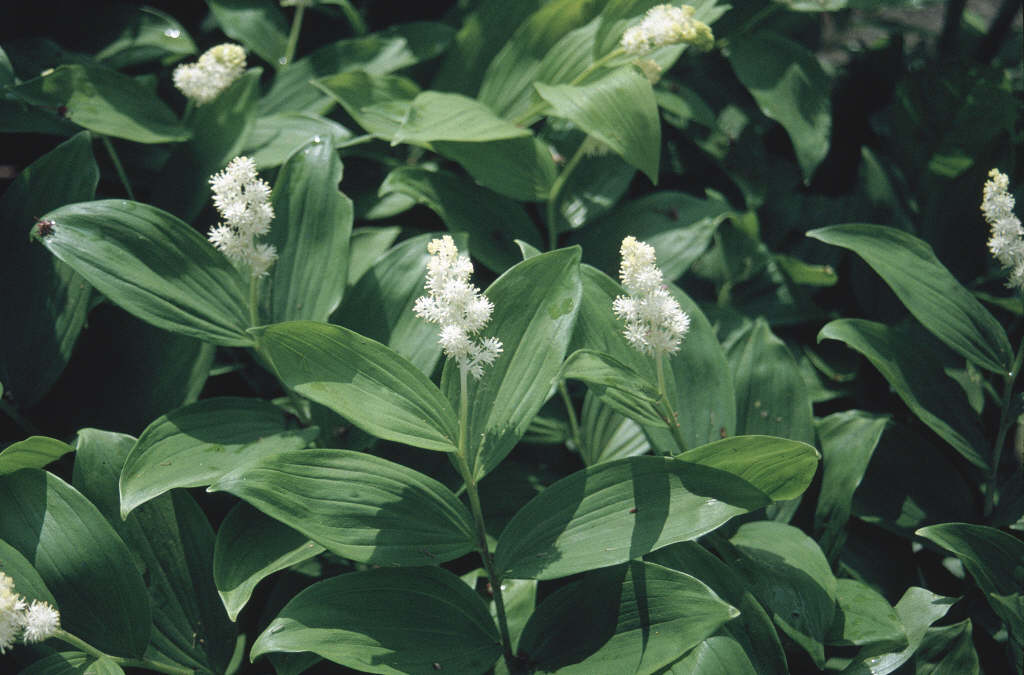Maianthemum racemosum
false spikenard
An herbaceous perennial to 75cm, the arching stems with broad-elliptic leaves and fluffy terminal panicles of fragrant creamy-white flowers, sometimes followed by reddish berries. Yellow autumn colour
Synonyms
Smilacina racemosaSize
Ultimate height
0.5–1 metresTime to ultimate height
2–5 yearsUltimate spread
0.1–0.5 metresGrowing conditions
Moisture
Moist but well–drainedpH
Acid, NeutralColour & scent
| Stem | Flower | Foliage | Fruit | |
| Spring | Cream | Green | ||
|---|---|---|---|---|
| Summer | Green | Green | ||
| Autumn | Green | Red | ||
| Winter |
Position
- Full shade
- Partial shade
Aspect
North–facing or West–facing or East–facing
Exposure
Sheltered Hardiness
H6Botanical details
- Family
- Asparagaceae
- Native to GB / Ireland
- No
- Foliage
- Deciduous
- Habit
- Clump forming
- Potentially harmful
- Fruit are ornamental - not to be eaten. Wear gloves and other protective equipment when handling Pets: Fruit are ornamental - not to be eaten - see the HTA guide to potentially harmful plants for further information and useful contact numbers
- Genus
Maianthemum are rhizomatous perennials with erect or arching stems bearing alternate leaves and small star-shaped flowers in terminal racemes or panicles, followed by red berries
- Name status
Correct
- Plant range
- N America, Mexico
How to grow
Cultivation
Grow in moderately fertile, humus-rich, lime-free, moist but well-drained soil in partial or deep shade. Shelter from cold winds
Propagation
Propagate by seed in pots in a cold frame in autumn. Propagate by division of rhizomes in spring
Suggested planting locations and garden types
- Underplanting of roses and shrubs
- Flower borders and beds
Pruning
No pruning required
Pests
Generally pest-free
Diseases
Generally disease-free
Get involved
The Royal Horticultural Society is the UK’s leading gardening charity. We aim to enrich everyone’s life through plants, and make the UK a greener and more beautiful place.
